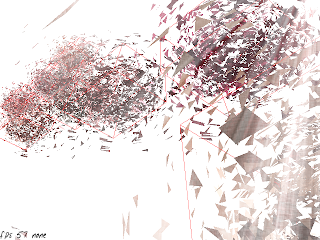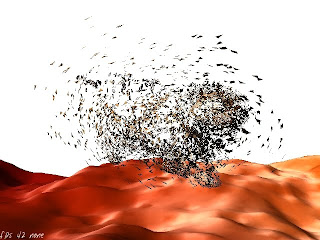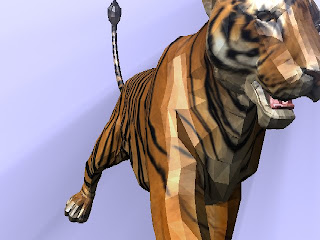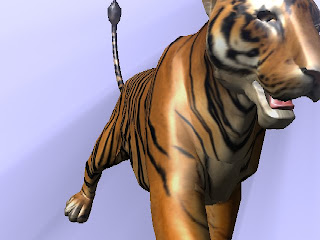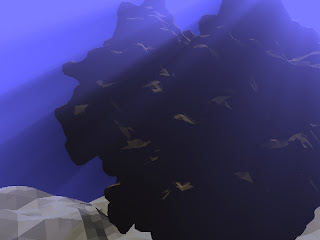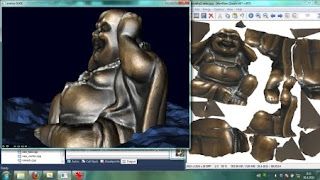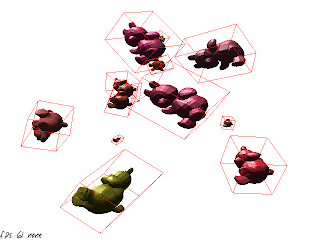
I've also rewritten the scenegraph part of the engine so that all CPU work (like the matrix calculation) happens before any GPU work. This meant a lot of refactoring but now I can enjoy much higher FPS rates even with a lot of complex geometry like exploding the buddha mesh and so on.
As next step I will experiment more with the explosion stuff, I want to add more physics. I already did some trials to rotate triangles while they fly but it did not really look that good, I probably will try to add per triangle velocity vertex attribute and apply gravity so that the pieces fall down. One problem also is that when I do the explosion in vertex shader my bounding volumes are not reflected to this change as shown below.
